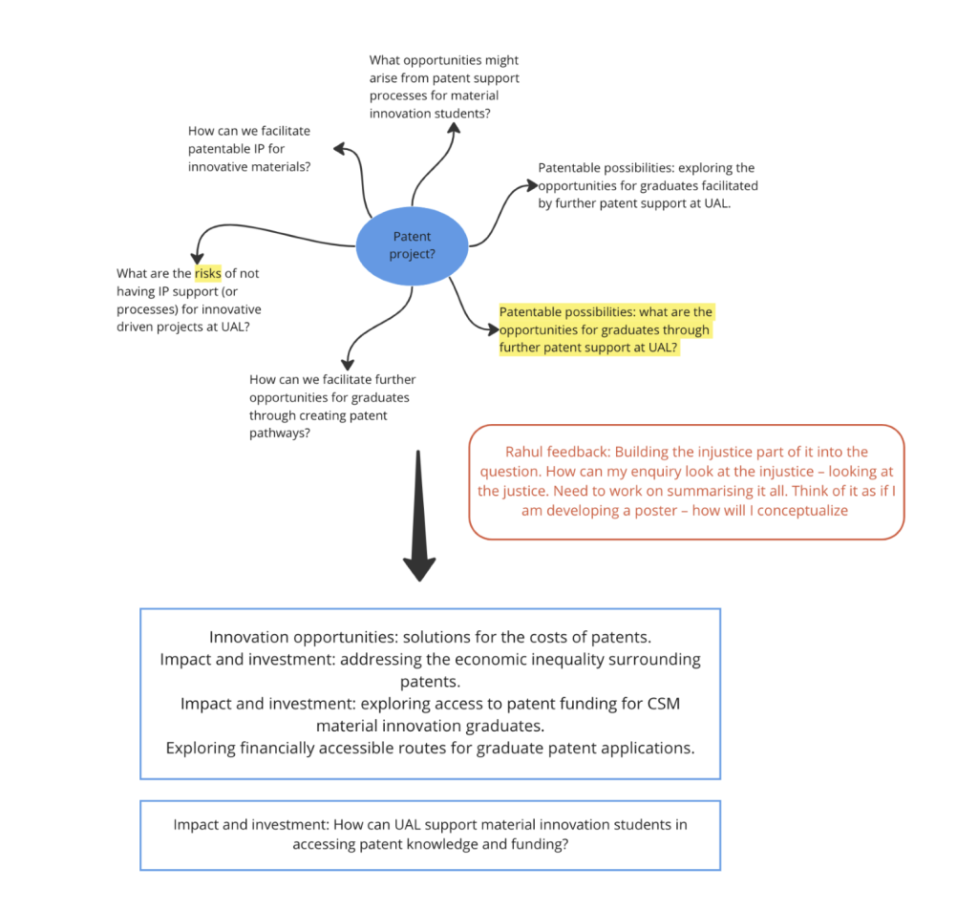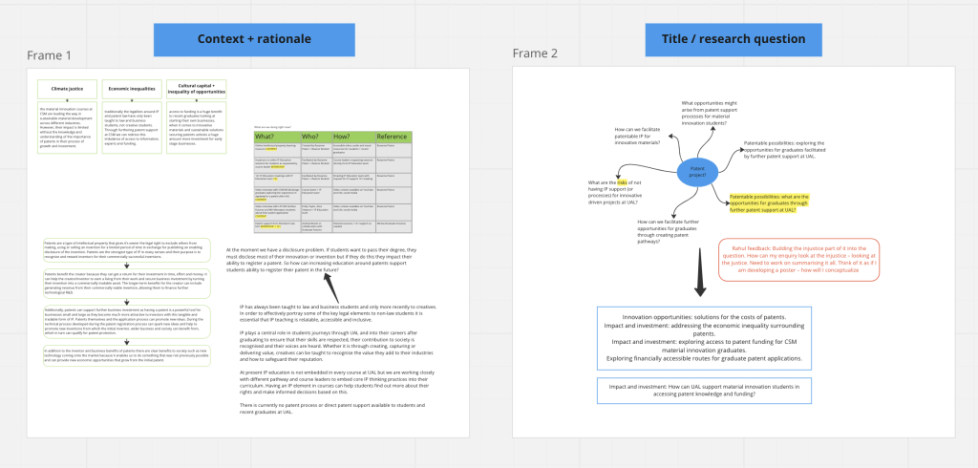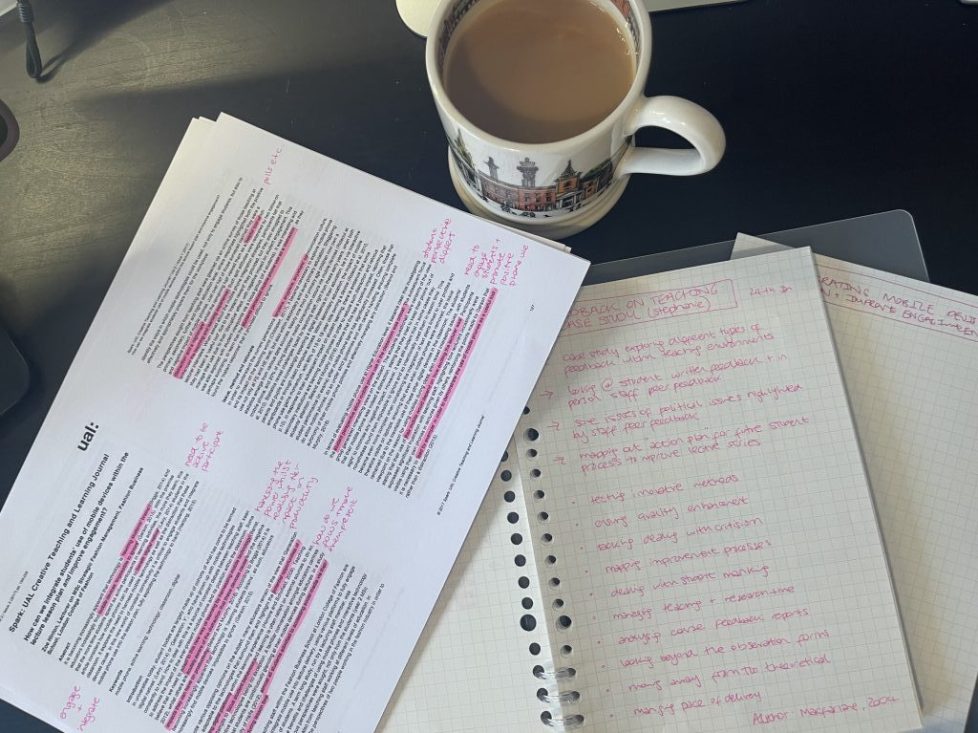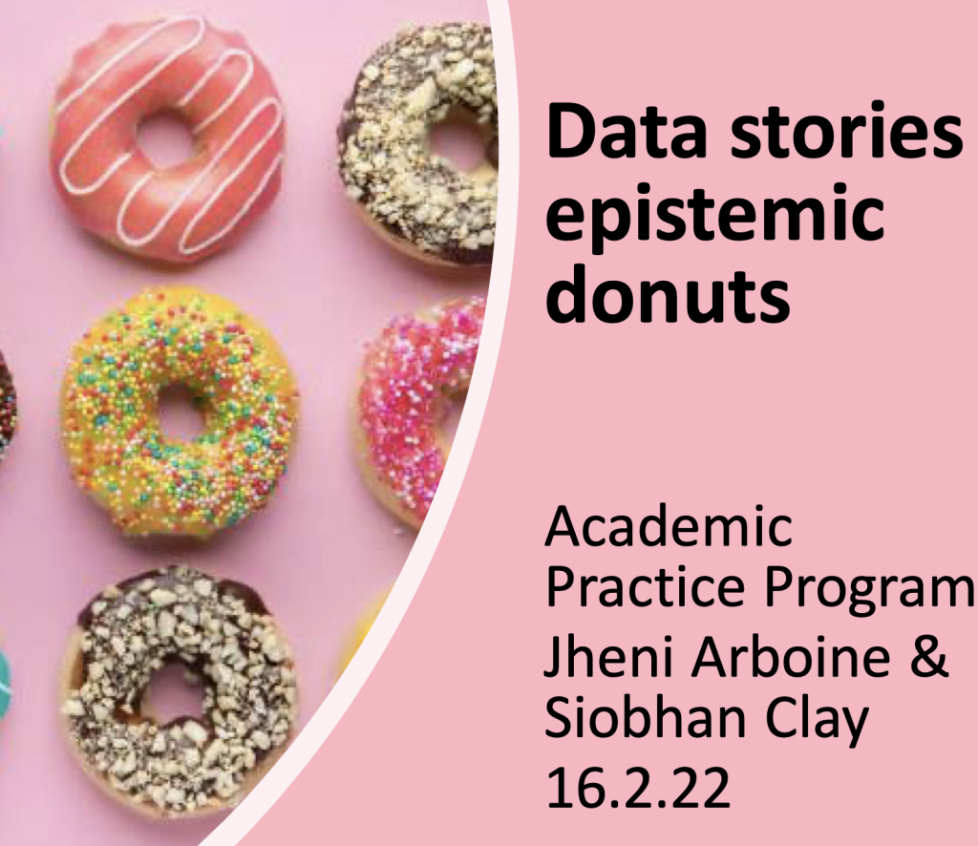- Film by Christine Sun Kim
It was fantastic to watch how Christine used sound to connect audiences and see, feel and touch what you can’t hear. The idea of a people possessing or claiming a sound was an interesting concept that I hadn’t considered before, but I could instantly understand Christine’s perspective in presenting this.
The film helped me to realise the importance of looking at more than a two-dimensional perspective on things. For example, in Intellectual Property there is a lot of information to absorb, and I know that my teaching is all about presenting the information in a digestible and applicable way. Christine’s video reenforces that people understand and reinterpret things in their own way and that as a facilitator I can give them the space to do this.
I can easily integrate these learnings into my teaching through scheduling in giving students a day between my lecturers and seminars to absorb and reinterpret the learnings from the lecture in their own way. In order to further the inclusive education provided by the Intellectual Property Education team working with UAL leadership teams will provide the organisational lead on making substantial changes (Ainscow and Sandill, 2008).
- UAL Disability Services webpages
There is clarity and direction in all of the information provided on the Disability Services webpages, I think the direction is important as students can be shown exactly where to go to receive the support that they need. I have noted that the initial emails we received from the teaching team for Inclusive Practices have also directed us to the Disability Services team – taking this into my own practice, it is a simple thing that I can do at the beginning of my modules to redirect students to the support offered.
One of the students that I am working with on an Intellectual Property and Collaboration video project has created The Accessibility Project – a social enterprise formed to research, challenge and create change to the barriers to accessibility faced. They are currently consulting for LCC regarding access to the building which is a huge issue for many students. Through this student I have found out more about the accessibility issues faced by students which often aren’t presented to us as staff facilitating sessions. I have learned a lot about how I can further support students as a unit leader from this student and I am to write up our story into a case study for Canvas to share with other staff members.
- #disabilitytoowhite article Vilissa Thompson
Vilissa’s story highlights the underrepresentation of disabled POC and the widespread impact of this as demonstrated by the retweets of their hashtag. Their story further demonstrates the importance of representation. Last year I saw hundreds of posts across social media about the impact of Disney’s Encanto. It featured an all-Latino cast with tributes to Colombian Culture showing that representation is more than similar skin colour – it’s about culture, language, history, upbringing, values and heritage.
In my teaching practice I provide a lot of media examples and I welcome students’ reflections on the examples that I choose. For example, a case of Dua Lipa and the paparazzi to highlight a copyright issue isn’t relatable or representative of the students I am speaking to so instead I may focus on a cultural appropriation case from a minority group (Hatton, 2003). I will look at any potential examples I can use to be inclusive and accepting of disabled POC in my sessions.
- Deaf Accessibility for Spoonies by Khairani Barokka
The quote that stood out for me in Khairani’s article was ‘to her credit she saw through my skin’ and describe the feeling of the doctor understanding the pain that she was in. I am sure that for all of us at UAL it is important for us to help students feel comfortable and confident within the classroom or studio environment.
In fashion there has been a lot of research as to stores as ‘third spaces’ with first space being home and second space being the office – a theory that is also hugely useful in academia (Soja, 1996). ‘Place-making’ has also become a buzzwork within the arts and cultural sectors in the UK (Meskell-Brocken, 2020). Whether I am delivered a series of lecutres, running a unit or acting as a ‘guest lecturer’ for an IP session I strive to facilitate a setting that allows students to be in the best position to learn. This might mean moving furniture, creating a circle of chairs to share stories or using post-it notes to get anonymous input. Irrespective of students disabilities, ways of learning or what is currently going on in their lives outside of the classroom I hope to create safe spaces for them to learn. Aiming at a comfortable ‘thirdspace’ my favourite definition of which is ‘merging students’ at-home and cultural experiences with their educational understanding, creating an open, flexible environment where the two can merge’ (Yahya and Wood, 2016).
- Disability Terms of Reference from Shades of Noir
I read and reflected on Claudette Davis-Bonnick’s article ‘Understanding Visual Impairments’ (pp.106-109). It was heart-breaking to read about those who feel they must self-select out of studying fashion due to their visual impairment (Barer, 2007). I love the quote ‘it is understanding the disability we are challenged with, not the person with the disability’ and supporting the participation of all students irrespective of their disabilities.
When I was in school I interned every summer at my local Optometry practice and part of this role was working with visual impaired people in the community. I went on house calls with Occupational Therapists that supported visually impaired people with day-to-day tasks and provided them with tools to support this. A story that will stick in my mind is that of an older gentleman struggling with sudden blindness due to glaucoma who could be supported with cooking and watching TV but when he asked for any tools that could help him with his painting, they said they couldn’t help. There are so many ways to participate in something and as facilitators and educators we have to do that and create a space for everyone to participate. I wish I could go back in time and help this man in finding ways that he could participant in his hobby of painting.
- Mental Health Terms of Reference from Shades of Noir
I read and reflected on the words of Kei Maye, ‘it’s ok to say you don’t feel ok’ (pp.62-63). My favourite quote from this section of the Mental Health Terms of Reference was ‘if your battery level is low, you’re allowed to take breaks and shouldn’t feel guilty in doing so!’. It was intriguing to read Kei’s words on conditioning ourselves to overwork and that breaks will lead to failure as this is something that I have struggled with personally over the last few years.
I studied an MA in Fashion Design Management and LCF and now I am a lecturer and dissertation supervisor on the course. As the units that I supervise are related to the final dissertation I regularly deal with students who are very stressed and feel under immense pressure. When I am facilitating sessions, I try to create a space where they can ask questions, feel calm, vent about their stress and have an outlet for their pressure. I love the words that Kei has written in this article, and I think it would be very useful to share this with my students in a session. Previously I have trialled a quick mental health or stress check in at the beginning of sessions which can work to help people share their worries about the dissertation. On refection of this article, I am considering trying an anonymous stress level activity during a session using post-it notes so I can understand how the students are feeling about their projects and workload. This will help me to facilitate the session to support their needs.
References:
Ainscow, M. and Sandill, A. (2010) Developing inclusive education systems: the role of organisational cultures and leadership, International Journal of Inclusive Education, 14:4, 401-41.
Barer, R., (2007) Disabled students in London: A review of higher and further education, including students with learning difficulties. London: Great London Authorities.
Hatton, K. (2003) Multiculturalism: narrowing the gaps in art education, Race, Ethnicity and Education, 6:4, 357-372
Meskell-Brocken, S. (2020) in Development a Sense of Place: The Role of Arts in Regenerating Communitites. Eds. Ashley, T. and Weedon, A. pp. 240-254. London: UCL Press.
Soja, E. W. (1996) Thirdspace: Journeys to Los Angeles and other Real and Imagined Places. Malden, MA: Blackwell.
Yayha, R. and Wood. A. (2016) Play as third space between home and school: Bridging cultural discourses. Journal of Early Childhood Research, Vol. 15., pp. 305-322.





